ACKNOWLEDGMENTS

We would like to acknowledge the help of the following: the Trustees of Oberlin College, Oberlin, Ohio, who, with an H. H. Powers Travel Grant, made possible some of the basic research for the book; Mr. Keith Botsford, director, and the National Translation Center, who with a grant made possible residence abroad and consultation on linguistic and textual problems; the Chinese literature faculty of Kyoto University; the office of the president, Kyoto University, and the gardeners in the Taipei Botanical Gardens. We would also like to thank the following publishers for their permission to use quotations from several poems: J. M.
Dent Sons Ltd., London; Harcourt, Brace World, Inc., New York; MacGibbon Kee Ltd., London; New Directions Publishing Corporation, New York; Oxford University Press, New York; and Arnoldo Mondadori Editore, Milan.
BIBLIOGRAPHY

This bibliography lists those books and articles which were most definitely and most directly useful to us as we translated the Tzu Yeh poems. We have omitted from the bibliography standard dictionaries and philological aids.
Chou Fa-kao: Chung-kuo ku-tai y-fa [A Grammar of Classical Chinese]. 3 vols. Taipei, 1959, 1961, 1962. 2 (1963). 2 (1963).
Curtius, Ernst Robert: Europ ische Literatur und lateinisches Mittelalter. Bern and Munich, 1948. ____ : European Literature and the Latin Middle Ages. Translated by Willard Trask. Princeton, 1953. Gourmont, Rmy de: Esthtique de la langue franaise.
Paris, 1955. Jacobson, Roman: "Linguistics and Poetics." In Style in Language. Edited by Thomas A. Sebeok. Cambridge, Mass., 1960. Joseph, Sister Miriam: Shakespeare's Use of the Arts of language.
New York, 1949. Karlgren, Bernhard: Word Families in Chinese. Stockholm, 1934. Kennedy, George A.: Selected Works. Edited by Tien-yi Li. New Haven, 1964.
Liu Ta-chieh: Chung-kuo wen-hsueh fa-chan shih [A History of Chinese Literature and Its Development]. 3 vols. Hongkong, 1961. Lu K'an-ju and Feng Yuan-chun: Chung-kuo shih-shih [A History of Chinese Poetry]. 3 vols. Peking, 1961.
McNaughton, William: "Chinese Poetry in Untranslation," Delos 1, no. 1 (1967). ____: "Pound's Translations and Chinese Melopoeia," Texas Quarterly 10, no. 4 (Winter 1967), pp. 5256. 2 (1965). ____: Shih Ching Rhetoric: Schemes of Words. ____: Shih Ching Rhetoric: Schemes of Words.
Ann Arbor, 1967. Oshanin, I. M., ed. Nekotorye voprosy kitatskot grammatiki [Some Problems in Chinese Grammar]. Moscow, 1957. Pound, Ezra: ABC of Reading.
Norfolk, Conn., n.d. Scotellaro, Rocco. fatto giorno [It's Day!]: 1940-1953. Milan, 1954. Valry, Paul: The Art of Poetry, trans. Denise Folliot.
New York, 1958. ____: Varits III. Paris, 1936. Van Gulik, R. H.: "Mi-hsi t'u-k'ao" [An Illustrated Investigation of the Secret Games; in English], A photo-printed, 50-copy edition of the author's handwritten manuscript, available in some libraries. Wang Li: Han-y shih-l-hsueh [Chinese Poetics].
Shanghai, 1962. Wei-Chin Nan-pei-ch'au wen-hsueh-shih ts'an-k'ao tzu-liao [Materials for Studying the Literary History of the Wei and Chin Dynasties and of the Period of Division between the North and South], Edited and annotated by the Chinese Literature Department of Peking University. 2 vols. Peking, 1962. Wei Ch'ing-chih: Shin-jen y-hsueh [Jade-filings from the Poets], Shanghai, 1958. Williams, William Carlos: Collected Earlier Poems.
New York, 1951. Yang Shu-ta: Han-wen wen-yen hsiu-tz'u-hsueh [Classical Chinese Rhetoric], Peking, 1954.


2. "Two Doves on a Flowering Branch," Anonymous, 12th13th century. Courtesy of the Smithsonian Institution, Freer Gallery of Art, Washington D.
Cinnamon Wine S HINING winds flow over
an edge of moon, Budding trees unroll
bright brocade flowers.
Cinnamon Wine S HINING winds flow over
an edge of moon, Budding trees unroll
bright brocade flowers.
Tender people play
in spring's night, Trailing slender hands
from silk sleeves.  C ALLING night-birds
C ALLING night-birds
cry in the bamboo wood. Falling plum flowers
fill the moonlit paths. A pleasing lady
strolls in the spring night, Gauze hem dragging
in the scented grass.  S PRING flowers
S PRING flowers
seductive thoughts Spring birds
sad thoughts Spring winds
(chaotic thoughts) Blow open
my silk net skirt. M OON bright
in the high
star sky, Spring night
and the cool
wind rises.
Orchid house,
and they quarrel
as they pretty and prepare Behind lace curtains
someone waiting
once again to be love-stirred. Orchid house: the women's quarters. In classical Chinese, there are several substantives which often appear as adjectives with only a remote reference to the original substance. They mean about the same thing as "fair" or "sweet" in Elizabethan poetry. Among these substantives are "orchid," "jade," "fragrance," andsometimes"gold." "Jade" is probably the most common. W IDE scarlet halls
are open to the air And circled
by the moat-hibiscus.
There, a jade bed, carved
like delicate bamboo A likely spot
for tangled kisses. Moat-hibiscus: fu-jung. This refers either to the lotus Nelumbo nucifera or to the tree-hibiscus Hibiscus mutabilis. The Nelumbo nucifera grows in water, has large round leaves that rise above the water on long stems, and produces large pink or white flowers. The Hibiscus mutabilis grows about 10 feet high and the flowers are pink or white. During summer 1967, the Old Palace Museum in Taipei had an exhibit of circular fan-paintings of the Sung dynasty, which included paintings both of the lotus and of the tree-hibiscus.
In Feng Ta-yu's "Lotus in the Wind" painting the flowers were pink or white, and the plant had tall stems with leaves growing several inches above the water. The exhibit also included an anonymous fan painting of hibiscus in which the plant had a leaf like a geranium, and the flowers were white grading into pink, and pink grading into red. According to the gardeners in the Taipei Botanical Garden, this color gradation on the flowers is one reason why the hibiscus is so much prized. Perhaps because of its ambiguity, the term fu-jung has passed from current usage and has been replaced by "tree-hibiscus" for the Hibiscus mutabilis and by ho or fu-ch' for the Nelumbo nucifera. The hibiscus grows in marshy ground, and various types of it are called rose mallow, rose of Sharon, and marsh mallow in English. (The latter word, of course, has been spoiled for poetry by the confectioners.) Since the Nelumbo nucifera and the Hibiscus mutabilis grow in similar environments and resemble each other, it is not surprising that the terms should be confused.
The translator's task is much complicated by such linguistic perversities, or vitalities. J ADE tower's dark

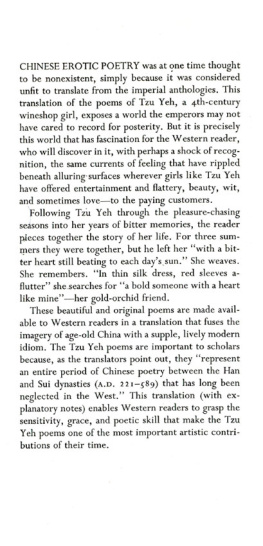

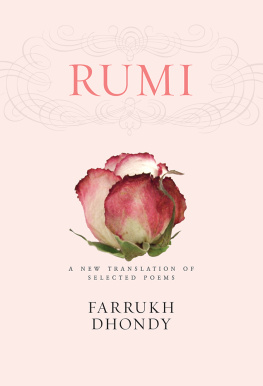
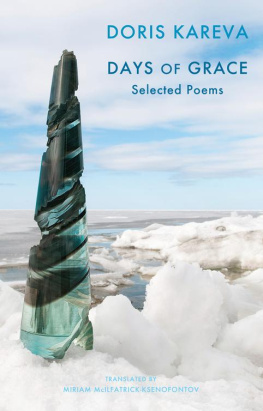


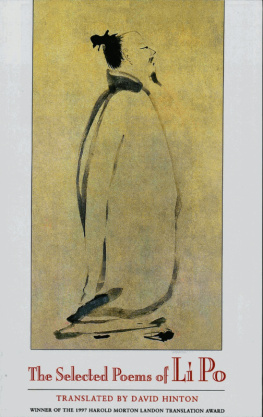
 We would like to acknowledge the help of the following: the Trustees of Oberlin College, Oberlin, Ohio, who, with an H. H. Powers Travel Grant, made possible some of the basic research for the book; Mr. Keith Botsford, director, and the National Translation Center, who with a grant made possible residence abroad and consultation on linguistic and textual problems; the Chinese literature faculty of Kyoto University; the office of the president, Kyoto University, and the gardeners in the Taipei Botanical Gardens. We would also like to thank the following publishers for their permission to use quotations from several poems: J. M.
We would like to acknowledge the help of the following: the Trustees of Oberlin College, Oberlin, Ohio, who, with an H. H. Powers Travel Grant, made possible some of the basic research for the book; Mr. Keith Botsford, director, and the National Translation Center, who with a grant made possible residence abroad and consultation on linguistic and textual problems; the Chinese literature faculty of Kyoto University; the office of the president, Kyoto University, and the gardeners in the Taipei Botanical Gardens. We would also like to thank the following publishers for their permission to use quotations from several poems: J. M. 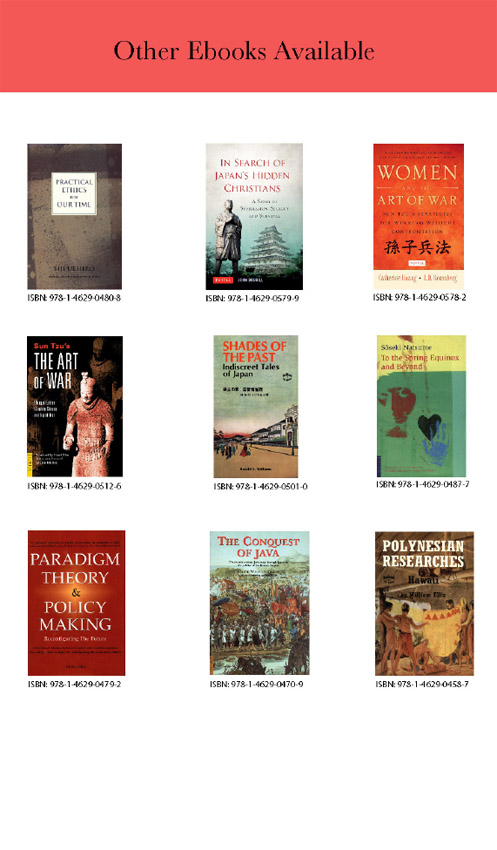


 2. "Two Doves on a Flowering Branch," Anonymous, 12th13th century. Courtesy of the Smithsonian Institution, Freer Gallery of Art, Washington D.
2. "Two Doves on a Flowering Branch," Anonymous, 12th13th century. Courtesy of the Smithsonian Institution, Freer Gallery of Art, Washington D. C ALLING night-birds
C ALLING night-birds